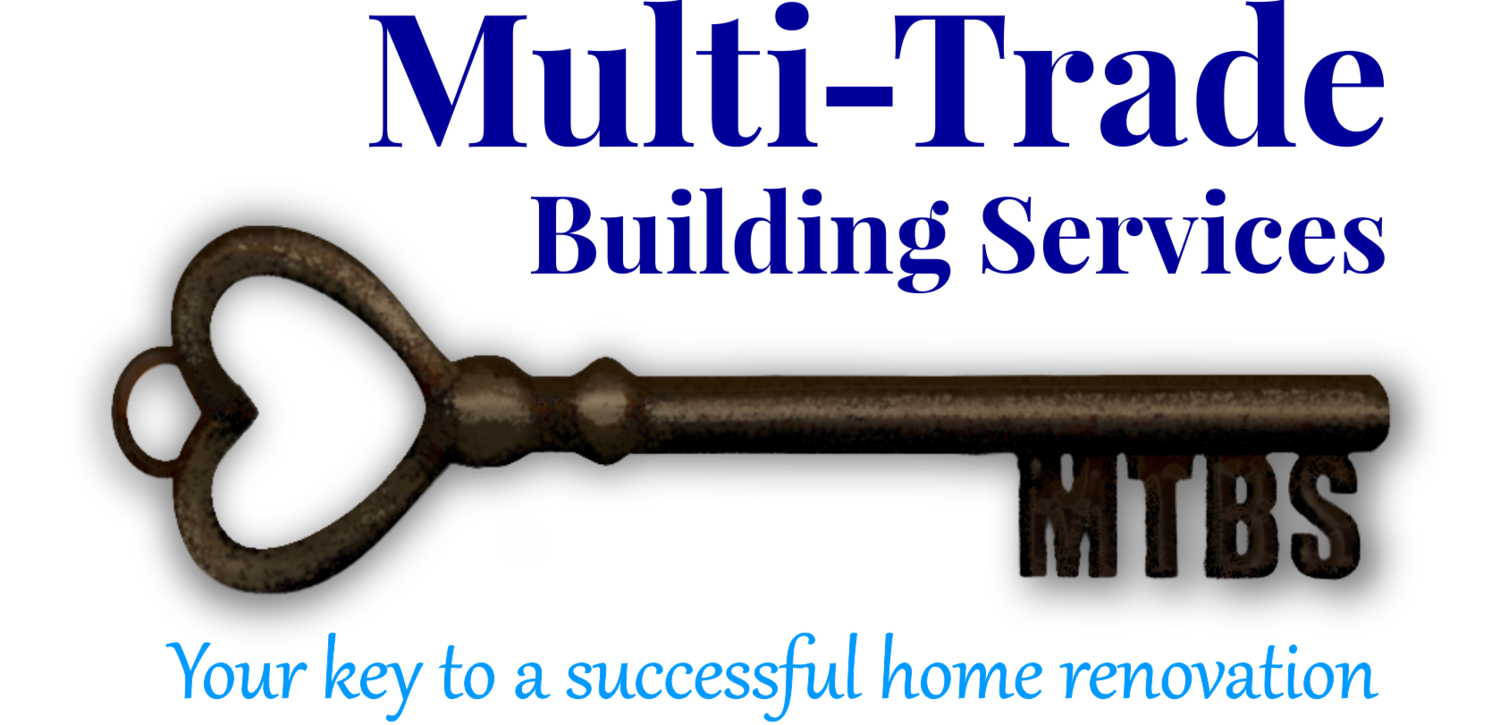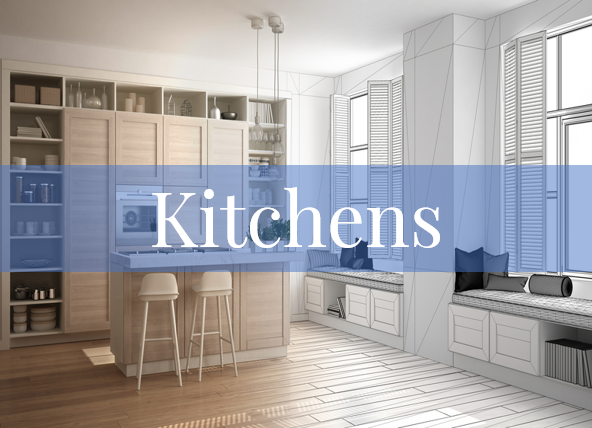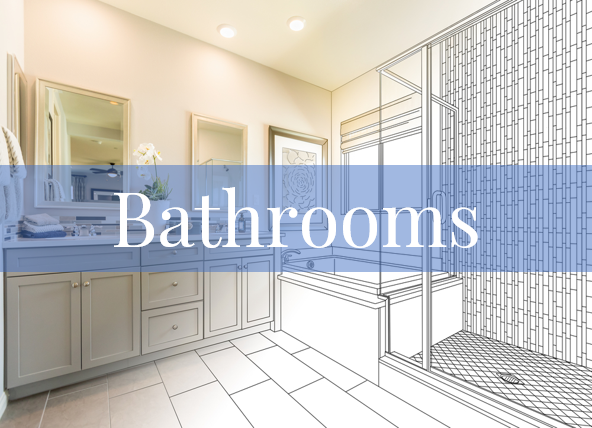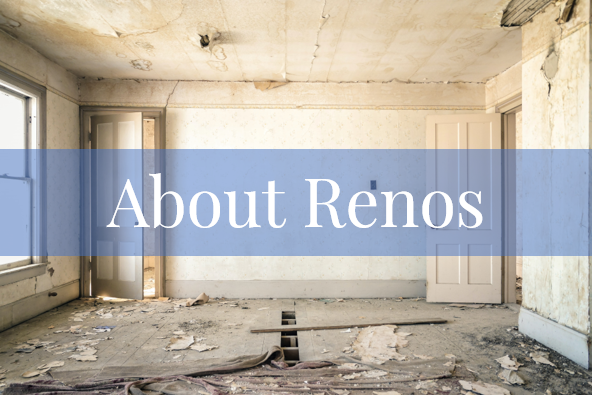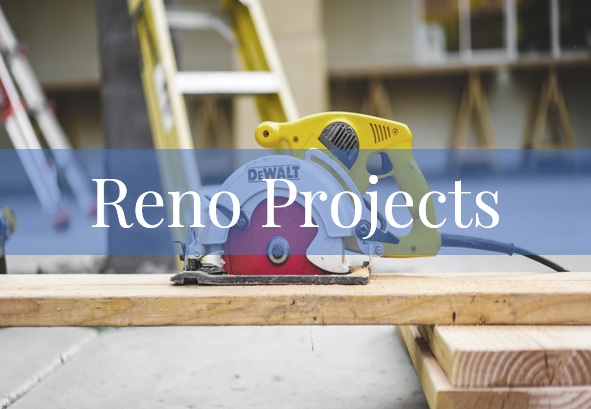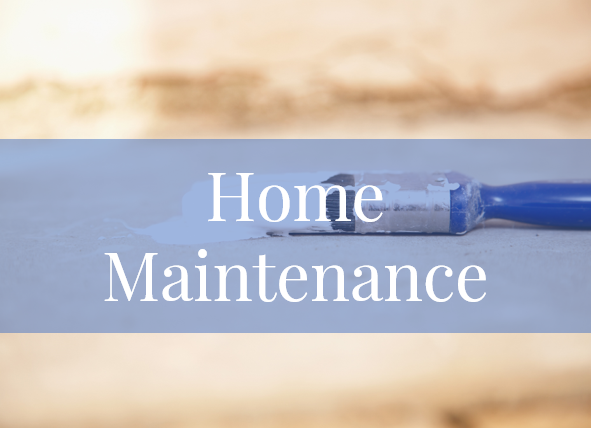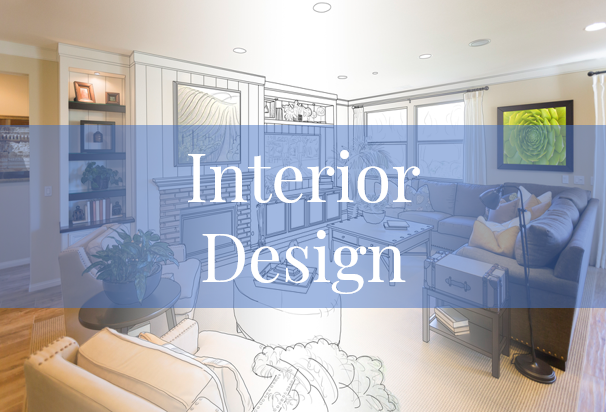10 Common Kitchen Renovation Mistakes (and How to Avoid Them Like a Pro)
/Let’s be honest—most of us don’t daydream about load-bearing walls or cabinet heights while sipping our morning coffee. But we do fantasize about finally having a kitchen where the drawers don’t stick, the lighting isn’t giving “basement dungeon,” and the countertops aren’t straight out of 1987.
That’s because kitchen renovations are about so much more than cabinetry and tile—they’re about how you feel in your space. It’s about creating a kitchen that makes you want to cook (or at least look like someone who might). A space that works with your life, reflects your personality, and doesn’t give you a mini panic attack every time you open a cupboard.
But getting there? That’s where things can get messy—and not the good kind of messy like baking cookies with your kids. We’re talking about the kind of messy that comes from rushing in without a plan, following fads over function, or forgetting that even the prettiest kitchen won’t help you if the outlets are in the wrong place.
So let’s walk through ten of the most common kitchen renovation mistakes—and more importantly, how to avoid them—so your dream kitchen doesn’t become a cautionary tale.
1. Skipping the Planning Stage: The Blueprint for Success
AKA: “We’ll figure it out as we go”—famous last words.
Planning may not be as exciting as picking out backsplash tile or swiping through dreamy kitchens on Pinterest, but it’s the step that keeps everything from snowballing into stress, delays, and budget regrets. Think of it like a recipe—if you just start tossing ingredients in the bowl without reading the instructions, you can’t be too surprised when your banana bread turns into a banana brick.
Why Planning Matters (and saves your sanity):
It keeps your wallet in check. A solid plan helps you figure out where the money’s going—so you’re not halfway through the reno wondering if you really needed that smart fridge that talks back.
It creates harmony. A plan brings all the moving parts—layout, finishes, appliances—into one coordinated vision, rather than a random collection of “sale items” and “impulse buys.”
It reduces decision fatigue. You’ll still make 4,000 decisions, but you’ll be making them with a clear roadmap instead of in a panic on a showroom floor.
Planning Pro Tips:
Start with your “why.” Do you need more storage? Better lighting? Space for actual cooking (instead of dumping takeout containers)? Get clear on what’s not working now so you can fix it later.
Budget like it’s real life. Set a number that feels doable, then add a 10–15% cushion for those delightful little surprises—like discovering your subfloor is being held together by hopes and dreams.
Talk to the pros. A contractor or kitchen designer can spot the pitfalls before you fall into them. They’re like the GPS that keeps you from driving off a cliff when you're deep in reno-land.
2. Ignoring the Work Triangle: A Recipe for Inefficiency
The “Hot Mess Express” Route to Meal Prep.
If you’ve ever made dinner while tripping over a garbage can, stretching across a too-small kitchen like a game of Twister, or walking laps just to get from the fridge to the stove… you’ve experienced life without a proper work triangle. And it’s not cute.
The “work triangle” is kitchen design 101—it’s the relationship between your sink, stove, and fridge. Think of it as the holy trinity of home cooking. If those three points aren’t playing nicely together, you’re going to feel it in your feet, your mood, and possibly your chiropractor bills.
👉 Want a deeper dive on this? Check out our best secrets for designing a kitchen you’ll love where we break down the work triangle (and a few underrated layout tricks) in more detail.
Why the Work Triangle Is Kind of a Big Deal:
It saves your sanity. A well-laid-out triangle means fewer unnecessary steps, which means fewer chances you’ll yell, “Why is the fridge over there!?”
It keeps you safe. Smart spacing helps avoid accidents—like bumping into someone while draining pasta or reaching over a hot stove for the cutting board.
It makes cooking feel like a rhythm, not a wrestling match. When everything flows, you’re more likely to enjoy the experience (or at least not dread it).
Common Work Triangle Oopsies:
Too much distance. If your triangle stretches across the entire room, you’re basically turning meal prep into cardio. Not ideal.
Obstacles in the way. Islands, trash bins, or rogue barstools can break up the flow and make your triangle more of a maze.
Too cramped. On the flip side, if everything is jammed into one corner, cooking starts to feel like a competitive sport.
Fixing the Flow:
Evaluate your current setup. Are you constantly zigzagging just to make toast? A few layout tweaks (like relocating a microwave or adding a prep sink) can make a world of difference.
Customize for real life. If your blender and air fryer are getting more use than your oven, don’t be afraid to create a secondary “mini triangle” for your lifestyle.
When in doubt, ask for help. A good designer can see what’s not working (Hint: That’s me!) and help you find clever solutions—even if a full gut job isn’t in the cards.
3. Choosing Style Over Function: The Dangers of Prioritizing Aesthetics
Because your kitchen isn’t just for Instagram—it’s for actual living.
We get it. That glossy photo of a perfectly styled kitchen with matte black everything and not a single toaster in sight? Gorgeous. But here’s the problem: you don’t live in a magazine spread. You live in a real house, with real people, real messes… and real cravings for midnight snacks.
Prioritizing looks over function is one of the fastest ways to end up with a kitchen that’s beautiful but secretly annoying. Think: no drawers where you need them, nowhere to plug in your blender, and open shelving that demands you own 27 matching mugs and zero cereal boxes.
Why Function Comes First (even if it’s not as sexy):
You’re in it every day. Whether you’re reheating leftovers or baking cookies from scratch, your kitchen should work for you—not fight you at every turn.
Style fades. Function doesn’t. Design trends are like bad dates—they come and go. But practical layout, smart storage, and durable finishes? Those are your ride-or-die.
Resale loves function. If you ever sell, buyers will notice if it’s a kitchen that works—no matter how trendy the cabinet colour was in 2025.
Common “Oops, That Was Just for Show” Mistakes:
Open shelving overload. It looks great in photos…right up until you realize you’re dusting your plates weekly and there’s no place to hide the mismatched Tupperware. Love the look of open shelves but worried about the clutter? We’ve got tips to make them work and keep your kitchen from looking like a garage sale—check out our blog on how to use open shelving effectively.
Pretty but fussy countertops. Marble may be stunning, but it’s also needy. It scratches, it stains, it sulks. (Okay, not really, but it acts like it.)
Not enough storage. Those sleek, handle-less drawers might look ultra-modern—but if you can’t fit a saucepan anywhere, Houston, we have a problem.
How to Nail the Balance:
List your real-life needs first. More prep space? Deep drawers for pots? A coffee station that doesn’t hog the entire counter? Make sure function sets the foundation.
Layer in style thoughtfully. Once your layout works, go ahead and express yourself! Just make sure your choices support—rather than sabotage—daily use.
Ask yourself, “Will I still love this when I spill spaghetti sauce on it?” If the answer is no, it might be more fashion than function.
Planning a kitchen renovation and want it to actually feel good—not just look good? We’ve helped hundreds of Durham Region homeowners create kitchens they’re proud to show off and live in. Learn why so many homeowners are choosing Multi-Trade Building Services for their next renovation.
4. Overlooking Lighting: Bright Ideas for a Well-Lit Kitchen
Because mood lighting shouldn’t mean you can’t see your cutting board.
Lighting is like the secret sauce of kitchen design—it’s not always obvious when it’s perfect, but oh, you’ll notice when it’s not. Too dim and you’re chopping veggies in the shadows. Too harsh and your kitchen feels like a dentist’s office. And relying on one sad ceiling light? That’s basically setting the stage for eye strain and regret.
Lighting isn’t just about making things pretty (though it helps). It affects how your kitchen feels, functions, and even how appetizing your dinner looks. No one wants to serve a beautiful risotto under a flickering fluorescent tube.
Why Good Lighting Is a Bright Idea:
Functionality first. You need proper task lighting where you cook, prep, and clean. Because “mystery meat” should never be the result of poor illumination.
It sets the mood. From Saturday night takeout to Sunday morning pancakes, lighting can shift the entire vibe of your kitchen.
It makes your renovation look better. Gorgeous cabinets and countertops don’t matter if no one can see them properly.
Not sure where to start with kitchen lighting? We’ve broken it all down for you in this helpful post—lighting solutions for your kitchen—so you can make choices that are both functional and fabulous.
Common Lighting Blunders:
One lonely light fixture. If your lighting plan begins and ends with “flush-mount in the centre of the ceiling,” it’s time to have a little chat with your electrician.
No under-cabinet lights. This is one of those upgrades people always say “we’ll add later”—and then never do. Meanwhile, you’re squinting at your chopping board under a cabinet shadow like a pioneer in candlelight.
No dimmers = no chill. Bright is great when you're meal-prepping. But do you want that same brightness when you're enjoying a quiet glass of wine or sneaking cookies at midnight? Didn’t think so.
Bright Tips for Better Lighting:
Layer it like lasagna. Combine ambient (general), task (focused), and accent (pretty) lighting. Your eyes—and your vibe—will thank you. Want to learn more about each of these types of lighting and where to use each? Check out our guide here.
Dimmers are your BFF. Add them everywhere you can. Being able to soften the light is a game-changer for mood, flexibility, and yes, romantic pizza nights.
Let the sunshine in. If you have windows or can add a skylight, go for it. Natural light makes everything look better (including you, by the way).
5. Overlooking Storage Needs: Avoiding Clutter and Chaos
Because if your air fryer lives on your floor, it’s time for a storage intervention.
Let’s face it: no matter how pretty your kitchen is, if you don’t have anywhere to put things, it’s going to end up looking like a yard sale exploded. Cluttered counters, crammed drawers, and a pantry that doubles as a game of Jenga? Not exactly the dream kitchen you were going for.
Storage isn’t just about space—it’s about sanity. It’s the difference between walking into your kitchen and feeling calm and in control… or like you’re one dropped spatula away from a full-blown meltdown.
Why Smart Storage Is Everything:
It keeps your surfaces clear. Which means you actually have space to prep dinner and somewhere to rest your elbows while you sip coffee like the domestic goddess you are.
It saves you time. No more rooting through six cupboards to find the lid that fits. (Spoiler: it’s always the last one.)
It makes your kitchen feel more “you.” When things are organized in a way that works for your lifestyle, cooking becomes less of a chore and more of a flow.
Storage Slip-Ups to Avoid:
Underestimating cabinet needs. You might think you don’t need that much storage—until your collection of reusable water bottles stages a coup.
Ignoring vertical space. Those tall ceilings? That awkward space beside the fridge? Goldmines. Tall uppers, pull-out pantries, and ceiling-mounted racks can make all the difference.
No specialized storage. If you’ve ever had to dig through a pile of baking sheets just to get to the cutting board, you know what we mean. Custom inserts, spice drawers, and deep pull-outs = game changers.
How to Get It Right:
Think long-term. Your needs might grow. Your kitchen should be ready. That means planning storage for your current lifestyle and where you’re headed.
Max out every inch. Corner cabinets, toe-kick drawers, even the back of cupboard doors—they all count. Use them.
Invest in hardware. Soft-close drawers, roll-outs, and sturdy shelves are worth every penny. They make daily life smoother and hold up better over time.
If storage is your kitchen’s Achilles' heel, don’t worry—we’ve got you covered. Check out our top kitchen storage ideas to see how we turn chaos into calm.
6. Over-Budgeting on Unnecessary Features: Avoiding the Allure of Trends
Trendy now… dusty later.
Renovation budgets are a bit like stretchy pants—deceptively forgiving until suddenly, they’re not. It’s easy to fall in love with high-end gadgets, imported finishes, or that jaw-dropping slab of quartzite with a name you can’t pronounce. But unless your kitchen doubles as a cooking show set, some of those bells and whistles might end up being more regret than reward.
This doesn’t mean you can’t have anything fancy—it just means being intentional about where your dollars go. Because let’s be honest: the wine fridge is cool, but wouldn’t it also be nice to still afford wine when it’s over?
Why Budget Discipline = Peace of Mind:
You avoid corner-cutting later. Overspending early often means sacrificing quality where it really matters—like the plumbing, layout, or lighting. (You know, the stuff that actually affects your daily life.)
You leave room for the unexpected. And in renovations, there’s always something unexpected. A little budget buffer = a lot less stress.
You stay focused on what matters. A beautiful kitchen that also functions like a dream? That’s worth more than a flashy feature you rarely use.
Common Budget Burners:
Exotic materials. Gorgeous? Yes. Necessary? Not always. There are lots of alternatives that still look high-end without the high-maintenance (or price tag).
Luxury appliances you’ll rarely use. If you make espresso once a month, maybe skip the built-in machine. If your current fridge does the job, maybe hold off on the one that texts you.
Over-the-top “wow” features. Hidden pop-up shelves, LED toe-kick lighting, and faucets that talk may sound fun—but will they make your life easier? Or just your budget tighter?
How to Spend Smarter:
Prioritize the non-negotiables. Focus first on layout, cabinetry, and appliances that match your lifestyle. These are the workhorses of your kitchen.
Get more than one quote. Whether it’s countertops or labour, a second (or third) price check can save you big. But make sure you’re not compromising a quality contractor or appliance in favour of that lower price tag. Remember, the bitterness of poor quality remains long after the sweetness of low price is forgotten.
Track as you go. Spreadsheets aren’t glamorous, but they’re the secret weapon to avoiding “wait, how much have we spent?” panic.
7. Underestimating the Importance of Ventilation: Keeping the Air Clean
Because your kitchen shouldn’t smell like last night’s fish for three days straight.
Ventilation isn’t exactly the star of your renovation mood board—but it should be the unsung hero of your kitchen. Good ventilation keeps the air fresh, the smells manageable, and the grease from building up on every surface like an invisible crime scene.
And yet, it's one of the most overlooked aspects of kitchen design. People spend hours choosing faucet finishes… but forget that without a proper range hood, that shiny faucet is just one more thing to wipe bacon grease off.
Why Ventilation Deserves a Standing Ovation:
It clears the air—literally. Cooking releases smoke, steam, and airborne grease. Good ventilation helps you breathe easier (especially if you’ve ever nearly set off the smoke alarm with toast).
It kicks odours to the curb. Garlic is delicious. Lingering garlic scent in your curtains three days later? Not so much.
It prevents long-term damage. Moisture and grease can damage walls, cabinets, and ceilings if they’re not dealt with properly. Good ventilation protects your investment.
The Most Common Ventilation Mistakes:
A range hood that’s too wimpy. If it sounds like a hair dryer and sucks like one too, it’s not doing much. You need a range hood with power that matches your cooking habits.
Ventless “solutions.” Recirculating hoods are better than nothing—but not by much. They trap some grease, but odours and moisture often just swirl around like confused ghosts.
Forgetting the maintenance. A range hood isn’t a set-it-and-forget-it item. Grease builds up, and filters need cleaning or replacing. (Yes, we know. Not fun. Still true.)
How to Keep Things Breezy:
Size it right. Your range hood should be as wide as your cooktop and have the right CFM (cubic feet per minute) rating for the size of your kitchen and the requirements of your stove, and how often you cook.
Always vent to the outdoors. It’s the only way to truly remove smoke, odours, and moisture from your home.
Supplement if needed. Got small windows? Consider adding an exhaust fan or cracking a window when cooking heavy meals.
8. Neglecting to Future-Proof Your Kitchen: Planning for Tomorrow
Because trends change, knees get cranky, and life doesn’t stay still.
When you're planning a kitchen reno, it’s easy to focus on what you need right now—more counter space, better lighting, a place to hide the Instant Pot. But here’s the thing: your life isn’t going to stay exactly the same. Maybe your family grows. Maybe you stay in the house into retirement. Maybe your knees start negotiating every time you open a lower cabinet. A future-proofed kitchen keeps up with all of it—gracefully.
Think of it like designing a kitchen not just for you today, but for Future You. And let’s be honest, Future You deserves a break.
Why Future-Proofing Matters:
Your needs will evolve. From toddlers to teenagers, family dinners to quiet mornings, a flexible kitchen layout will support all of it.
It saves you from round two. Building in thoughtful features now means you're not tearing things apart again in five years because something suddenly isn’t working.
It boosts resale value. Even if you’re not planning to sell, it’s smart to think about what a future buyer will see as functional, accessible, and timeless.
Common “Oops, We Didn’t Plan Ahead” Regrets:
Ignoring aging-in-place features. You don’t need grab bars and ramps (yet), but soft-close drawers, pull-outs, wider walkways, and lever handles? Those are quiet luxuries that work for everyone—now and later.
Forgetting tech flexibility. Smart appliances, charging stations, under-cabinet lighting—today’s fancy is tomorrow’s standard. A few small upgrades now can save big headaches later.
Going all-in on trends. Avocado green appliances once seemed like a good idea too. Choose classic foundations and sprinkle in trendier accents through decor—much easier to swap out.
How to Design for the Long Game:
Think adaptable. Go for modular cabinetry, easy-to-reach storage, and layouts that don’t box you in. Your lifestyle might change—your kitchen should be ready.
Choose quality over gimmicks. Durable surfaces, quality finishes, and energy-efficient appliances never go out of style.
Blend timeless and trendy. You can still have fun with your design—just build the bones of your kitchen to last, and play with style in areas that are easy (and inexpensive) to update.
Future-proofing doesn’t mean sacrificing style—it just means designing smarter. Here’s how to build an accessible kitchen that works for everyone, without feeling clinical or cold.
9. Not Allowing Enough Time: Avoiding the Pressure of Deadlines
Because a rushed renovation is like fast food—it might be quick, but you’ll probably regret it later.
Everyone wants their kitchen done yesterday. We get it. When your stove is in the hallway and your coffee maker’s on the bathroom counter, patience wears very thin. But rushing your renovation timeline is one of the quickest ways to end up with sloppy workmanship, missed details, and a whole lot of “why didn’t we just wait another week?”
Renovations take time. Not because your contractor is lounging in a hammock, but because quality work, materials, and inspections don’t run on your cousin’s BBQ schedule. The more you build in breathing room, the less likely you’ll end up in full meltdown mode when things (inevitably) hit a bump.
Why Giving Yourself Time Is a Gift:
Better decisions = better results. When you’re not racing the clock, you make smarter, more thoughtful choices instead of panic-picking a backsplash because your tile guy’s waiting in the driveway.
Contractors can do better work. Rush jobs lead to mistakes, missed steps, and callbacks. Slow and steady = solid and stunning.
Your stress level stays in check. Renovations are disruptive even in the best-case scenario. Adding unrealistic deadlines is a recipe for headaches (and possibly a few tears).
Timing Mistakes to Watch For:
Tying the reno to an event. Trying to get your kitchen done in time to host Thanksgiving dinner for 14 people? That’s brave—and possibly unrealistic.
Forgetting about permits. Some work needs city approvals. And unfortunately, permit offices don’t usually operate on “sense of urgency.”
Stacking trades too tightly. It might seem efficient to have your electrician, plumber, and cabinet installer all booked in the same 48 hours—but it’s more likely to cause delays than save time.
Tips for Keeping Your Timeline (and your sanity) on track:
Plan with a buffer. Build in extra time for things like shipping delays, backorders, or that one day your contractor needs to redo something because a wall wasn’t square. It happens.
Communicate openly. A good contractor will help you set a realistic schedule—and keep you informed if something shifts. (We’re big believers in that, by the way.)
Stay flexible. Things will change. The more flexible your mindset, the better your experience.
If you're feeling the urge to rush through your renovation, take a breath. We wrote a whole blog about why quicker isn’t always better—and how slowing down can actually save you stress (and money).
10. Neglecting the Post-Renovation Phase: Final Touches Matter
Because the last 5% is what turns a renovation into a revelation.
You’ve made it through the noise, the dust, the takeout dinners, and the appliance deliveries. Your kitchen is finally done—or is it? It’s easy to get so excited about moving back in that you skip the final touches… but that’s like baking a gorgeous cake and forgetting the icing.
The post-reno phase is your victory lap. It’s where the little details get wrapped up, any lingering issues are addressed, and your beautiful new space officially becomes yours. Don’t rob yourself of that moment just because you’re ready to put the toaster back.
Why the Final Details Matter:
They complete your vision. Paint touch-ups, cabinet hardware, outlet covers—these tiny things are what make the space feel finished, not just “mostly there.”
They catch what might’ve been missed. A final walkthrough helps spot small issues (misaligned doors, missing caulking, squeaky drawers) before they turn into long-term annoyances.
They help you settle in with peace of mind. When everything’s done properly, you get to enjoy your kitchen without a mental to-do list hanging over your head.
Common Final Phase Missteps:
Skipping the final inspection. Whether it’s with your contractor or just you and your checklist, don’t skip this step. It’s your chance to speak up about anything that feels off.
Neglecting the deep clean. Construction dust is like glitter—it gets everywhere. Before you start filling drawers, make sure everything’s truly clean and ready for move-in.
Delaying the “fun stuff.” Art, plants, cozy textiles—these finishing touches add warmth and personality. Don’t leave your kitchen looking like a showroom with commitment issues.
Conclusion: Learning from the Pros for a Successful Renovation
Mistakes happen—but they don’t have to happen to you.
Renovating your kitchen isn’t just about paint colours and appliances. It’s about creating a space that fits your life, your routines, and your dreams. It’s where coffee happens, memories are made, and weekday chaos meets a tiny slice of calm. And that’s why it deserves thoughtful planning, a dash of patience, and a whole lot of heart.
By learning from the most common renovation mistakes—and trusting the pros who’ve seen it all—you’re already ahead of the game. So whether you’re dreaming of better lighting, smarter storage, or just a kitchen where the drawers actually open without a fight, we hope this guide gave you the clarity (and maybe a few laughs) to get started.
Want support from a team who cares about your renovation and your peace of mind?
We’d love to help you fall in love with your kitchen again. 💛
👉 Contact us today to book your consultation and take the first step toward a kitchen that truly feels like home.
